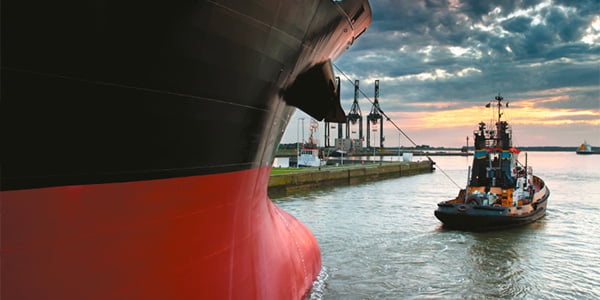Definition & Benefits
Marine TVSAT (Television via Satellite) systems employ stabilised, dome-enclosed satellite antennas to receive broadcast television channels from geostationary satellites, even when a vessel is pitching, rolling, or yawing.
Key advantages for maritime operators include:
- Continuous Entertainment & Information
Engage crew and passengers with hundreds of channels of news, sports, movies and educational content, improving morale and reducing fatigue on long voyages. - Global & Regional Coverage
Choose from Ku-band, Ka-band or C-band footprints tailored to your trade routes, reception from coastal waters to open oceans. - Robust Stabilization
2-axis or 3-axis gyro-stabilised platforms and beam-shape tracking maintain lock on the satellite signal in all sea conditions. - Integrated Systems
Seamlessly combine TVSAT with onboard IP networks, VoIP and VSAT data links for unified management and remote diagnostics.

Installation & Integration
System Design & Survey: RF coverage analysis to select optimal satellite beams and antenna size. Mechanical assessment for radome placement, structural support, and cable routing.
Network Integration: VLAN segmentation for entertainment vs. operations traffic. Optional hybrid setups: VSAT failover, cellular (4G/5G) backup, or L-band receivers for redundancy.
Hardware Installation: Above-Deck Unit (ADU): Marine-rated radome housing the stabilised antenna, LNB(s) and tracking sensors. Below-Deck Unit (BDU): Receiver/decoder, Antenna Control Unit (ACU), power inserters, and rack-mountable network interfaces.
Commissioning & Training: Precision pointing, signal-quality testing, and channel lineup configuration. Hands-on training for vessel IT and technical staff on system operation, diagnostics, and firmware updates.
Technical Performance
Our TVSAT solutions are engineered for reliable, high-quality reception under the most demanding conditions:
Antenna Sizes & Gain
Compact (37–45 cm) to large (81 cm–1 m+) antennas for coastal to deep-sea coverage.
Frequency Bands
Ku-band: 12–18 GHz (standard maritime TV).
Ka-band: 26–40 GHz (HD/UHD heavy-traffic zones).
C-band: 4–8 GHz (rain-fade resistant options).
Stabilization & Tracking
2-axis vs. 3-axis gyro or beam-shape tracking for sub-degree pointing accuracy, even in head seas.
Signal Reliability
Advanced rain-fade mitigation and automatic polarisation skew control for uninterrupted viewing.
Cost Expectations
TVSAT involves hardware CAPEX and recurring subscription OPEX. To tailor a solution for your vessel’s profile and operational needs, request a personalised quote rather than relying on one-size-fits-all pricing.
These are the expected range of costs for TVSAT connectivity on vessels and yachts:
Terminal & Installation
- Antenna, radome & BDU hardware: typically $5,000–$25,000 depending on size and features.
- Professional installation & commissioning: $1,000–$4,000 based on system complexity.
Service Plans
- Basic regional packages: $300–$800/month (select channel lineups).
- Global HD/UHD packages: $1,000+/month with 24/7 technical support.
Discover the perfect TVSAT solution for your fleet. Get your customised quote today to ensure unparalleled entertainment and value.
Use Cases
- Commercial Shipping – Bridge-area news feeds, crew recreation lounges, safety briefings via video.
- Passenger Vessels & Ferries – Guest entertainment, real-time event broadcasts, advertising overlays.
- Offshore Energy Platforms – Crew welfare channels, operational video conferencing, weather & market updates.
- Yachts & Superyachts – Live sports, UHD streaming, integrated cabin entertainment systems.
- Fishing & Research Fleets – Fisheries management data, market broadcasts, morale-boosting programming.

Regulatory & Compliancce
ITU & National Spectrum Coordination – Ensures interference-free operation across all managed beams.
Environmental Standards – Marine-grade radomes tested for salt spray, UV exposure, and extreme temperatures
SOLAS & STCW – Supports safety messaging and crew welfare mandates via designated channels.
Encryption & Data Security – AES-256 encryption on IP-based control links; user-definable firewalls.
FAQS
Do you need a special satellite dish for a yacht?
Absolutely. Unlike fixed home dishes, yachts require stabilised, dome-enclosed antennas that continuously track the satellite signal despite vessel motion. These marine-grade dishes house tracking sensors, LNBs, and stabilisation mechanisms to maintain lock in rough seas.
What frequency bands are used for TVSAT reception?
Marine TVSAT typically operates on:
- Ku-band (12–18 GHz): Standard for HD television channels.
- Ka-band (26–40 GHz): Used in high-density traffic zones for UHD content.
- C-band (4–8 GHz): Employed where rain-fade resistance is critical.
Your provider and cruising area will dictate the optimal band choice.
Can I access streaming services (e.g., Netflix) via my TVSAT system?
No. Standard TVSAT antennas receive one-way broadcast channels—they lack the return link needed for Internet streaming. To use services like Netflix at sea, you’ll need a separate satellite Internet connection (e.g., VSAT) or hybrid solution that combines TV reception with two-way IP connectivity.
How far offshore can I receive TVSAT signals?
With a typical 37–45 cm marine antenna, reliable reception extends up to ~50 nautical miles from shore. Larger dishes (60 cm+) and stronger satellite footprints can push that range much farther, but ultimate coverage depends on your chosen satellite’s beam pattern.